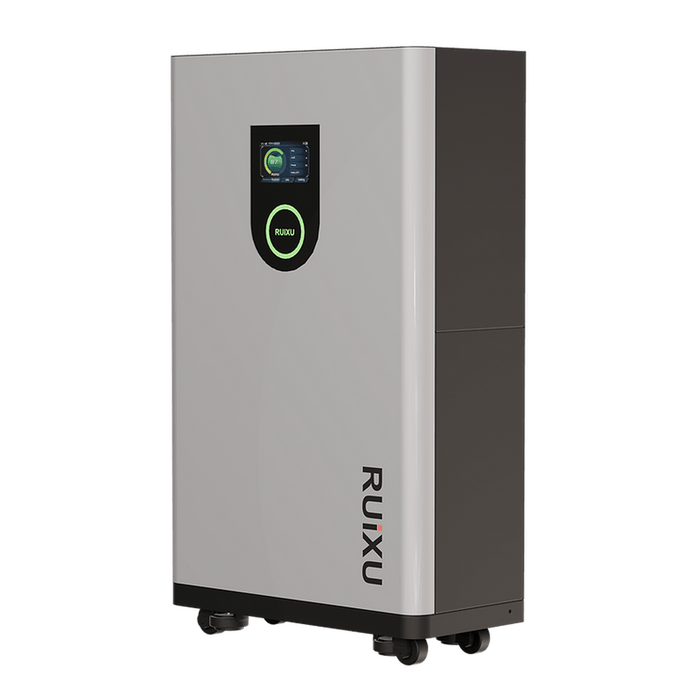GOT A QUESTION? CALL US: 571-350-0146
Call Our Experts Today!
(571) 350-0146
info@solarguyspro.com
Mon-Sun: 9am-7pm EST
GOT A QUESTION? CALL US: 571-350-0146
Call Our Experts Today!
(571) 350-0146
info@solarguyspro.com
Mon-Sun: 9am-7pm EST

When it comes to powering your electronics, backup devices, or solar accessories, not all AA batteries are created equal. Even though they share the same size, the internal chemistry, voltage, and capacity can vary widely. That’s why knowing how to read and use an AA Battery Voltage Chart is essential.
This chart helps you compare voltage levels, chemistry types, and performance characteristics so you can select the best batteries for your needs — whether for solar-powered systems, flashlights, or home electronics.
In this guide, we’ll break down everything you need to know about AA batteries: from standard sizes and voltage ratings to how charge and power levels relate. By the end, you’ll have a clear understanding of which AA batteries deliver the best performance and reliability.
This article will be published on SolarGuysPro.com, your trusted source for solar power systems, batteries, and energy solutions.

An AA battery, also called a “double A” battery, is a small cylindrical power cell that measures approximately 14.5 mm in diameter and 50.5 mm in length. It’s one of the most common battery sizes in the world, used in everything from TV remotes and flashlights to solar-powered devices and digital cameras.
The “AA” designation refers strictly to the physical size of the cell — not its chemistry or voltage. That’s why two AA batteries can look identical but deliver very different amounts of energy and power depending on their chemical makeup.
AA batteries fall into two main categories: primary (non-rechargeable) and secondary (rechargeable).
Primary batteries (like Alkaline or Lithium) are single-use and should be discarded after depletion.
Rechargeable batteries (like NiMH or NiCd) can be used multiple times after recharging, offering a cost-effective and eco-friendly option for long-term use.
The right type depends on your application. Devices that require steady power over time (like solar garden lights or controllers) often benefit from rechargeable batteries, while devices used occasionally (like remotes) may work fine with primary cells.
It’s easy to assume that every AA battery provides exactly 1.5 volts — but the reality is more nuanced.
Nominal Voltage is the average or rated voltage of the battery type.
Open-Circuit Voltage is the voltage measured with no load connected.
Loaded Voltage is the actual voltage when the battery powers a device.
End-of-Discharge Voltage is the point where the device stops functioning properly.
Each chemistry type has its own voltage behavior. For example, an Alkaline battery might start at 1.6 V and gradually drop as it discharges, while a NiMH rechargeable battery maintains a more consistent 1.2 V for most of its cycle.
Here’s a comprehensive AA Battery Voltage Chart comparing the most common battery chemistries, their voltages, capacities, and rechargeability. Use this as a quick reference when choosing the right power source for your devices.
| Chemistry / Type | Nominal Voltage (V) | Typical Capacity (mAh) | Rechargeable | Notes / Characteristics |
|---|---|---|---|---|
| Zinc-Carbon | 1.5 V | 400 – 1,700 mAh | No | Low-cost, short life span, best for low-drain devices. |
| Alkaline | 1.5 V (fresh up to 1.65 V) | 1,800 – 2,700 mAh | No | Most common disposable battery, good shelf life and availability. |
| Lithium (Primary) | 1.5 V | 2,000 – 3,000 mAh | No | Excellent performance in cold temperatures, lightweight, long shelf life. |
| NiMH (Nickel-Metal Hydride) | 1.2 V | 1,900 – 2,800 mAh | Yes | Rechargeable, steady voltage output, ideal for high-drain devices. |
| NiCd (Nickel-Cadmium) | 1.2 V | 600 – 1,000 mAh | Yes | Rechargeable, durable, but prone to memory effect. |
| NiZn (Nickel-Zinc) | 1.6 V | 1,500 – 1,800 mAh | Yes | Higher voltage, suitable for specific electronics requiring 1.6 V. |
| Li-FeS2 (Lithium Iron Disulfide) | 1.5 – 1.8 V | 2,700 – 3,300 mAh | No | High capacity, stable performance under heavy load. |
| LiFePO4 (Lithium Iron Phosphate) | 3.2 V | 500 – 750 mAh | Yes | High-voltage rechargeable cell, not compatible with most AA devices. |
Tip: Always match the voltage of your battery to your device’s requirements. Using a higher-voltage battery in a 1.5 V-rated device can damage sensitive electronics.
Batteries don’t maintain a constant voltage throughout their use. Their voltage gradually decreases as the stored energy depletes. This drop depends on the battery chemistry, internal resistance, and the rate of current draw.
Alkaline batteries start around 1.6 V and slowly decrease as they discharge.
NiMH batteries hold steady around 1.2 V for most of their life and then drop sharply near the end.
Lithium batteries maintain a consistent voltage for longer, making them ideal for devices that need reliable power output.
If voltage drops too low, your device might turn off even though the battery still holds some charge. For high-drain electronics like cameras or flashlights, using a chemistry that maintains voltage under load (like NiMH or Lithium) ensures stable performance.

Battery capacity, measured in milliampere-hours (mAh), indicates how much energy the battery can deliver before it’s depleted. A higher mAh rating generally means a longer runtime.
For example:
A 2,700 mAh alkaline battery can run a low-drain device for days.
A 1,900 mAh NiMH battery can handle higher drain but will need recharging sooner.
A lithium AA with 3,000 mAh offers both high capacity and strong voltage stability.
However, capacity is affected by temperature, discharge rate, and battery age — so real-world performance often differs from lab ratings.
Your choice of AA battery should match your device’s power requirements:
Use inexpensive Alkaline or Zinc-Carbon batteries.
These devices draw minimal current, so high-capacity rechargeables aren’t necessary.
Opt for Alkaline or Lithium batteries for consistent voltage.
Rechargeable NiMH is a great long-term option if used frequently.
NiMH or Lithium batteries perform best due to low internal resistance.
NiZn batteries can also be used for higher-voltage needs, but check compatibility first.
AA batteries play a role in smaller solar systems such as lights or sensors. Using rechargeable NiMH or LiFePO4 batteries allows energy from solar panels to be stored efficiently for nighttime use. This reduces waste and maximizes energy output in off-grid environments.
You can test a battery’s health using a simple multimeter:
Set the meter to DC volts.
Touch the red probe to the positive terminal and the black probe to the negative terminal.
Compare the reading:
Above 1.3 V (Alkaline): good charge.
Around 1.1 V: nearing depletion.
Below 1.0 V: needs replacement or recharge.
Never mix old and new batteries or different chemistries in the same device. The weaker battery can drain faster and even leak due to uneven voltage distribution.
Store in a cool, dry environment.
Avoid direct sunlight and heat.
For long-term storage, remove batteries from devices to prevent corrosion.
Extreme cold reduces battery capacity, while heat accelerates chemical degradation. Lithium batteries generally perform better in cold weather, making them ideal for outdoor use.
Myth 1: All AA batteries are 1.5 V.
Reality: Rechargeables like NiMH are 1.2 V, but perform equally well because of their stable voltage output.
Myth 2: Rechargeable batteries lose power too quickly.
Reality: Modern low self-discharge NiMH batteries can hold up to 80–90% of their charge for months.
Myth 3: Using higher-voltage batteries always improves performance.
Reality: Exceeding the rated voltage can permanently damage sensitive electronics.
Some newer AA-sized cells, like 14500 lithium-ion batteries, provide a nominal voltage of 3.7 V. Although they physically fit into AA compartments, they are not true AA batteries and should never be used in devices that expect 1.2–1.5 V input.
These cells are meant for specialized flashlights, power tools, and battery packs that include built-in voltage regulators or protection circuits. Always verify your device’s specifications before using these higher-voltage cells.

AA batteries can play a small yet significant role in solar setups — especially for smaller-scale or portable solar systems. In solar lighting or garden systems, rechargeable AA NiMH batteries store energy collected during the day and release it at night.
For more advanced off-grid systems, LiFePO4 cells (though not AA-sized) are used due to their efficiency, long cycle life, and stable voltage output. If you’re building or upgrading a solar setup, understanding battery voltage levels is key to ensuring compatibility and optimal energy storage performance.
Understanding the AA Battery Voltage Chart helps you choose the right battery for every device — from remotes and flashlights to solar-powered electronics.
To recap:
The “AA” label only defines size, not power.
Voltage levels differ by chemistry — from 1.2 V in NiMH to 1.6 V in Alkaline or even 3.2 V in LiFePO4.
Choose batteries based on your device’s current draw, voltage tolerance, and frequency of use.
For sustainability and savings, rechargeable NiMH batteries are an excellent long-term investment.
The next time you shop for AA batteries, consult this voltage chart to make an informed choice. With the right power source, your devices — and your solar-powered systems — will perform better, last longer, and save you money in the long run.
Visit SolarGuysPro.com for premium batteries, solar panels, and reliable off-grid energy solutions.
Leave a comment